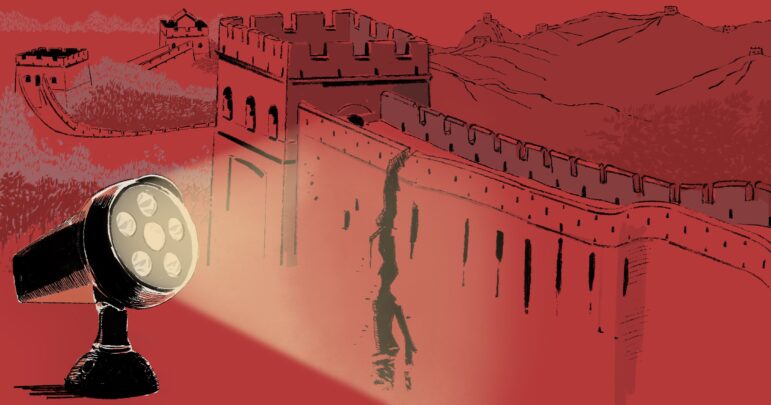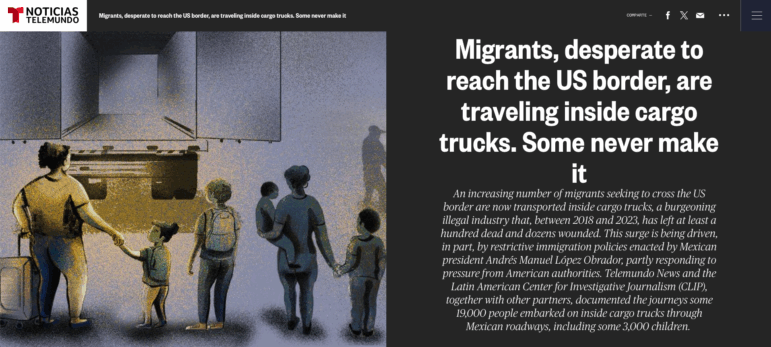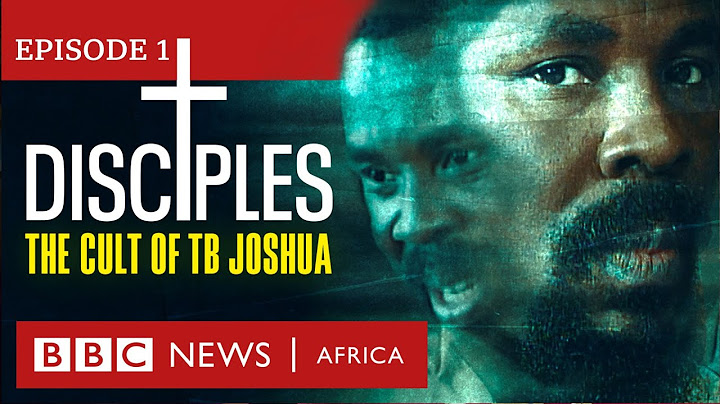

Investigations from Nigeria, Egypt, Peru, and Mexico were recognized at the Global Shining Light Award ceremony at GIJC25. Image: Suzanne Lee, Alt Studio for GIJN
Brave Investigations from Nigeria, Egypt, Peru, and Mexico Honored at GIJC25’s Global Shining Light Awards
Courageous investigations into migrant abuses in Mexico; attacks on Amazonian Indigenous communities, reckless foreign combat recruitment by Russia, and a harmful cult in Africa have won Global Shining Light Award (GSLA) honors during a gala event at the 14th Global Investigative Journalism Conference (GIJC25) in Kuala Lumpur, Malaysia.
This unique prize honors watchdog journalism in developing or transitioning countries, carried out under threat or in perilous conditions. Open for public interest investigative projects published between January 1, 2023 to December 31, 2024, the competition attracted 410 entries from 97 countries.
Choosing from 13 outstanding finalists, the five-person GSLA prize committee — comprising investigative editors from five continents — awarded two winners in the Large Outlets category, one winner in the Small and Medium Outlets category (organizations with staff of 20 or fewer, including freelancers), and a Special Citation for one standout submission from Africa.
“We commend the quality and ambition of the reporting by this year’s awardees, investigative journalists who work in some of the most dangerous places in the world,” said Sheila Coronel, director of the Stabile Center for Investigative Journalism at Columbia University, and convenor of the prize committee.
“They used data, documents, open source sleuthing, dogged field reporting, and creative storytelling to hold governments, armies, organized crime, and other bad actors accountable for the harm they have caused. They are shining examples of watchdog journalism, especially needed at a time when the press and democracy are under attack.”
“We are inspired by all the pieces submitted to the Global Shining Light Awards,” said Emilia Díaz-Struck, executive director of the Global Investigative Journalism Network. “The stories bring us powerful and essential work for citizens around the world done by journalists who have faced threats and risks. They are examples of extraordinary work done using solid investigative journalism methods that uncover stories of public interest. Congratulations to all the winners.”
Notably, the GSLA honorees of 2025 featured intrepid perilous investigations into topics that either few or no other organizations were investigating at all: the use of dangerous trucks for human trafficking; the recruitment of Arab men for Russia’s assault on Ukraine; the hidden harms of an abusive cult; and the links between drug trafficking and the assassination of Indigenous leaders.
Here are the three GSLA winners and one special citation entry honored at GIJC25.
Large Outlets Category
Tráileres, Trampa Para Migrantes (Cargo Trailers: Trap for Migrants) (Mexico)
Noticias Telemundo and the Latin American Center for Investigative Journalism (El CLIP), in collaboration with ICIJ, Bellingcat, Pie de Página, Chiapas Paralelo (Mexico), En un 2×3 Tamaulipas (Mexico), Plaza Pública (Guatemala), and Contracorriente (Honduras)
Team: Ronny Rojas, Eulimar Núñez, Àngela Cantador, María Teresa Ronderos, Albinson Linares, Pablo Medina, Martha Olivia López, Ángeles Mariscal, Miguel Ángel León, Jody García, Allan Bu, Jesús Escudero, Delphine Reuter, Luisa Fernanda Arias, Marion Briancesco, José Luis Peñarredonda, Damià Bonmatí, José Luis Osuna, Carlos Gonzáles, Christian Trujillo Gallegos, Alejandra Saavedra López, Mayra Báez, Isabel Mateos Hinojosa, Brenda Medina, Antonio Cucho, Santiago Compotes, Rodrigo Saenz, Geysell Cisneros, Iris Castro, Juliana Jiménez, Horacio Arias, Alejandra Arteaga, Victoria Albanesi, Bruno García, Marta Planells, Juan Baez, Valeria León, Daniela Pastrana
This seven-month-long collaborative investigation exposed systemic and lethal abuses involved with the growing use of cargo trucks to transport migrants and asylum seekers through Mexico. It found that at least 111 migrants were killed by suffocation or traffic accidents during a five-year period in which 19,000 people were transported by this method, while also revealing the enabling government policies and the human trafficking strategies of the organized crime groups behind it.
When this cross-border collaboration was forming, reporters discovered that official data did not exist about road accidents involving migrant smuggling and human trafficking in Mexico. In the end, the team created the first database on this issue, revealing a hidden, lethal safety threat to migrants. The investigation also uncovered new trafficking routes, the increased use of tractor-trailers, the impunity of criminal gangs, coercion of truck drivers, and astonishingly low human trafficking conviction rates in Mexico’s district courts.
Their methodology was grounded in courageous shoe-leather reporting and included more than 70 records requests, careful data analysis, and testimonies from survivors, drivers, families, and officials. Beyond the general safety risks of investigative work in Mexico, some team members working in the states of Tamaulipas and Chiapas required protective measures in response to specific threats.
Remarks from the prize committee included: “This is dogged reporting, following the story from beginning to conclusion. It uses the tools that made investigative reporting what it is.” Another panel member added: “It told a story that hasn’t been told before. A topic that is very sensitive and relevant.”
- See the methodology behind the investigation in this GIJN story.
Los Vuelos de la Muerte: Líderes Indígenas Asesinados en un Territorio Invadido por 67 Narcopistas (Death Flights: Indigenous Leaders Murdered in a Territory Invaded by 67 Narco Airstrips) (Peru)
Mongabay Latam, Earth Genome
Team: Alexa Vélez, María Isabel Torres, Vanessa Romo, Lourdes Fernández, Geraldine Santos, Juan Julca, Edward Boyda, Willie Schubert, Enrique Vera, Elizabeth Salazar, Yvette Sierra, Hugo Alejos, Max Cabello, Santiago Romaní
Before this project, little was known about how organized crime activities in remote areas of the Amazon affected Indigenous communities. In a deeply sophisticated and gutsy year-long investigation, Mongabay Latam uncovered a network of drug trafficking airstrips in three Amazonian regions of Peru — as well as the links between these export routes and a campaign of violence and assassinations against Indigenous leaders and communities.
After a data-gathering phase featuring information requests, brave on-the-ground reporting, and traditional sources, the team used an AI-powered search tool created by Earth Genome to find deforestation patterns consistent with airstrips already identified with tools such as OpenStreetMap and satellite imagery portals. Focusing on three Peruvian regions — Ucayali, Huánuco, and Pasco — where 15 Indigenous leaders had been killed and where 28 more remain under threat, the team followed a rigorous verification process to identify 67 clandestine airstrips linked to drug trafficking, 30 of which were located within Indigenous territories. As the entry noted: “Seven territories in particular are not only invaded by airstrips, but surrounded by them.”
The project built a database of narco airstrips that includes location, use, date of opening, distance from roads and rivers, and presence in protected areas.
While the project was rigorous in terms of security precautions for both reporters and sources, serious risks of mafia violence were inherent.
Special Citation
Disciples: The Cult of TB Joshua
BBC Africa Eye and OpenDemocracy (Nigeria)
Team: Charlie Northcott, Helen Spooner, Ibitayo Ibikunle, Tom Saater, Rebecca Way, Gary Beelders, Yemisi Adegoke, Maggie Andresen, Innes Ward, Damilola Banjo, Izzy Fleming, Bilkisu Labaran, Dan Adamson, Monica Garnsey, Tom Watson, Liz Gibbons, Lydia Namubiru, Madeleine Jane, and Margaret Coker.
In an apt description from the entry for this three-part documentary series: “The investigation unearthed crimes of unimaginable scale and severity for a man once regarded as a prospective saint.”
In a three-year investigation into Africa’s most famous evangelical pastor and his Synagogue Church of All Nations — which had amassed more than a billion views online and a devoted following of hundreds of thousands of followers, including several foreign presidents — BBC Africa Eye was able to unravel the untainted image and “untouchable” status of Nigeria’s TB Joshua.
Through its reporting, the team was able to identify victims of numerous forms of sometimes violent abuse in a dozen countries, from the US and the UK to South Africa and Namibia. But the project was founded on insider testimony: on-the-record accounts of dozens of the pastor’s former “disciples.” In addition to praising the dogged sourcing and compelling storytelling in the series, several members of the GSLA prize committee gave the same summary: “Amazing story!” and one added: “This had a huge impact across the continent; they managed to find people who could speak.”
Small and Medium Outlets Category
The Russian Trap: Recruiting Egyptians with the Lure of Money and Nationality
Masrawy (Egypt)
By: Sara Abo Shady
Some investigative stories simply stun audiences with answers to questions that few had even asked. This project not only revealed a hidden, sinister effort to recruit young Arab men for Russia’s war on Ukraine — including Egyptian students in particular — but also provided revealing details on how Russia changed its recruitment criteria to lure foreign-born men into deadly peril.
The story revealed the cluster of financial and immigration promises made to volunteers, the role of Russian and Egyptian brokers, and the inadequate training provided to young Egyptians quickly sent to the front lines. But the GSLA panel was also impressed with the deeper storytelling, which revealed the anguish of the families of soldiers who were often left utterly in the dark about the fate of their loved ones.
Facing safety risks from multiple bad actors, the lead reporter was forced to take extensive security precautions to keep sources, project data, and editorial staff safe, and endured surveillance and harassment after publication.
The team obtained key, hard-to-get documents for their findings, including contracts signed between the young Egyptians and both their Russian brokers and their military units, missing persons complaints submitted to the Egyptian Ministry of Foreign Affairs, and travel visas issued to potential recruits by the Russian government — in some cases, simple tourist visas.
Prize committee comments included: “Well reported, with names and numbers of those who are enlisted in the Russian army,” and “A very high profile issue, and very illuminating about the way that people get sucked into being Russian mercenaries.”
 Rowan Philp is GIJN’s global reporter and impact editor. A former chief reporter for South Africa’s Sunday Times, he has reported on news, politics, corruption, and conflict from more than two dozen countries around the world, and has also served as an assignments editor for newsrooms in the UK, US, and Africa.
Rowan Philp is GIJN’s global reporter and impact editor. A former chief reporter for South Africa’s Sunday Times, he has reported on news, politics, corruption, and conflict from more than two dozen countries around the world, and has also served as an assignments editor for newsrooms in the UK, US, and Africa.












